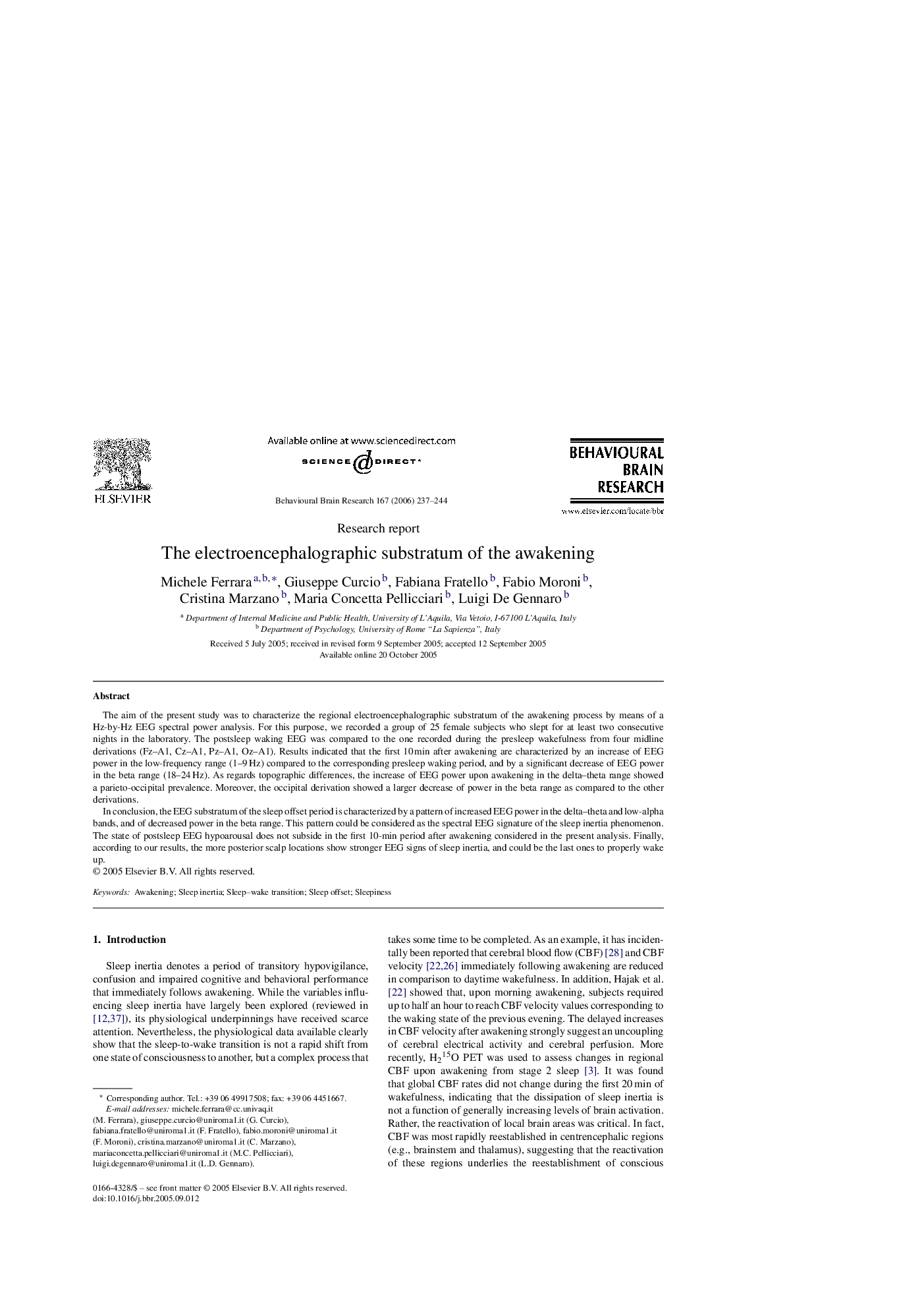| کد مقاله | کد نشریه | سال انتشار | مقاله انگلیسی | نسخه تمام متن |
|---|---|---|---|---|
| 4316241 | 1290116 | 2006 | 8 صفحه PDF | دانلود رایگان |

The aim of the present study was to characterize the regional electroencephalographic substratum of the awakening process by means of a Hz-by-Hz EEG spectral power analysis. For this purpose, we recorded a group of 25 female subjects who slept for at least two consecutive nights in the laboratory. The postsleep waking EEG was compared to the one recorded during the presleep wakefulness from four midline derivations (Fz–A1, Cz–A1, Pz–A1, Oz–A1). Results indicated that the first 10 min after awakening are characterized by an increase of EEG power in the low-frequency range (1–9 Hz) compared to the corresponding presleep waking period, and by a significant decrease of EEG power in the beta range (18–24 Hz). As regards topographic differences, the increase of EEG power upon awakening in the delta–theta range showed a parieto-occipital prevalence. Moreover, the occipital derivation showed a larger decrease of power in the beta range as compared to the other derivations.In conclusion, the EEG substratum of the sleep offset period is characterized by a pattern of increased EEG power in the delta–theta and low-alpha bands, and of decreased power in the beta range. This pattern could be considered as the spectral EEG signature of the sleep inertia phenomenon. The state of postsleep EEG hypoarousal does not subside in the first 10-min period after awakening considered in the present analysis. Finally, according to our results, the more posterior scalp locations show stronger EEG signs of sleep inertia, and could be the last ones to properly wake up.
Journal: Behavioural Brain Research - Volume 167, Issue 2, 28 February 2006, Pages 237–244